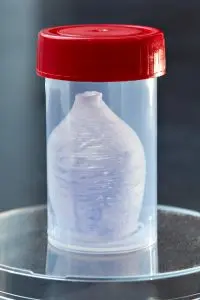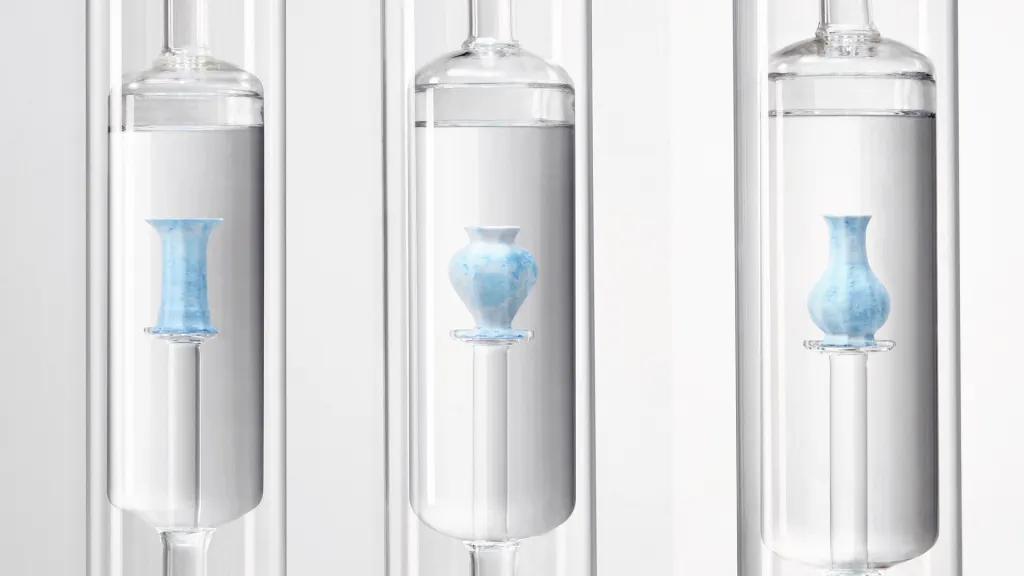Delftware–also known as Delft pottery or Delft Blue–is a typical white and blue tin-glazed earthenware named for the Dutch town where it has been made for centuries. Typically decorated with plants, daily scenes, and other graphic motifs, Delftware can be traced back to the 14th-century Chinese porcelain that Europeans loved so much, they started to produce their own with different decorations in the 16th century.

This pottery also comes from Netherlands, but from the labs of Biomedical Engineering professor Dr. Patricia Dankers and her PhD candidate, Dan Jing Wu, at Technology University in Eindhoven. The design is the brain child of Dutch-Chinese artist Hongjie Yang.
The structure of each vase is taken from real Delftware, captured by a laser scanner. But the differences end there: These shapes are 3D-printed out of a biodegradable polymer, which creates a scaffold on which to grow the human tissue that makes up the surface of the vases. The tissue is made from HeLa cells–an immortal cell line typically used in scientific research, named because they’re derived from the cervical cells taken in 1951 from cancer patient Henrietta Lacks.
“Originally I wanted to use my own stem cells, to derive an object from myself,” he says over email. That idea had to be evaluated by an ethical committee for medical research in the Netherlands, which rejected it because the country doesn’t allow scientists to experiment with their own cells. Instead, he decided to use Lack’s cells–the oldest human cell line in existence.
For Yang, there’s a symbolism in the use of HeLa cells: “I see this work as a kind of conceptual and practical parallel to the medical production of replacement body parts,” he explains. The method he used, of coating a scaffolding in living cells to create the structure of each vase, is exactly the same process used by doctors to create experimental bone parts and vascular tissue.
For the bioengineering team at Eindhoven, this project was a good opportunity to advance their methodology. According to Dankers, “the project offers us a unique opportunity to share the research we do with the general public in a different way. It shows the progress in this research field and gives a stimulating picture of the future.”
The entire process took about month, including scanning, printing materials, culturing, and incubating. After each vase was completed, the team chemically added a Coomassie protein dye, which is an organic compound that happens to be blue. That finishing step created the traditional “Delft blue” look. Finally, they installed each vase inside a cylindrical glass tube containing preservatives like formaldehyde to protect them permanently.
While the vases may seem simple, the project was incredibly challenging from the start. It was very difficult to secure funding and a collaboration partner, which he found in the Technology University in Eindhoven. “It took more than seven months for me to get a positive response through long time conversations,” Yang adds.
He believes that using human tissue to fabricate products–especially in the future, when you may own your own cells and genetic code–is a natural next step in manufacturing. With the Delft blue collection, he’s evoking romanticism and repulsion at the same time–in other words, “oh, gross . . . but cool!”
Recognize your brand’s excellence by applying to this year’s Brands That Matter Awards before the early-rate deadline, May 3.








